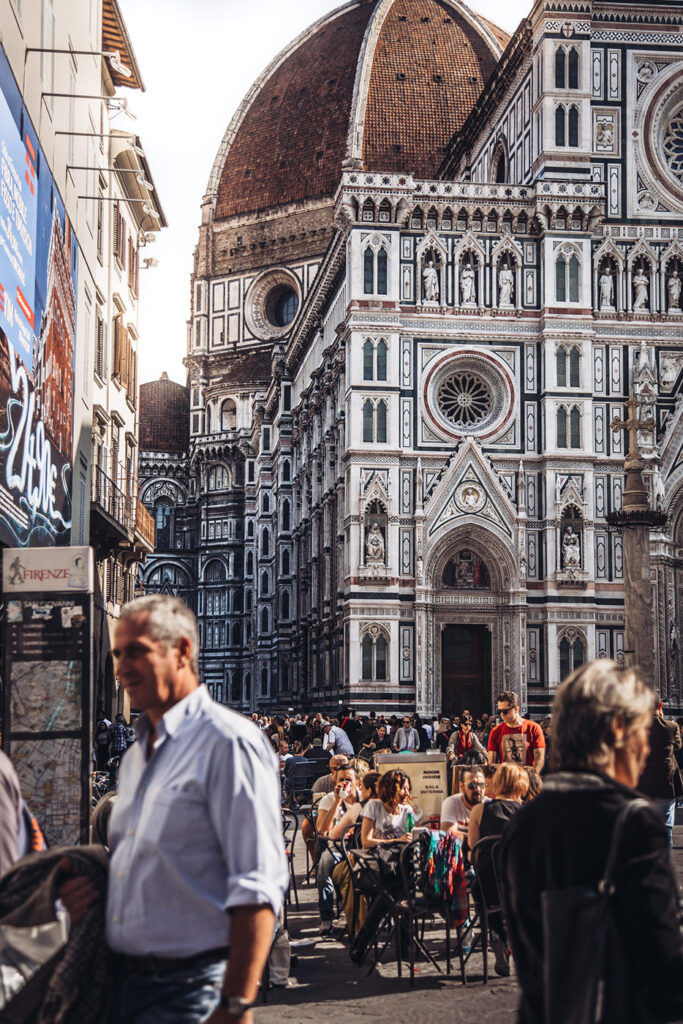
Field Notes
What You Need To Know Before You Land In Florence
A starter guide on getting around Florence and a handful of Italian words to get you your first espresso in the City of Lilies.
Editor’s Note: This story is published in The Florence Issue of Life & Thyme Post, our exclusive newspaper for Life & Thyme members. Get your copy.
Getting to Florence
Florence has its own airport, Aeroporto di Firenze-Peretola, but it is small. With the slightest bit of wind, prepare to have your flight diverted to a neighboring airport like Pisa. If this happens, a cab is your best option, but be prepared for steep fares.
If you’re taking a train in, Florence’s main station is Firenze Santa Maria Novella. A train from Rome to Florence will take about two hours, as will one from Milan.
Getting Around Florence
The best way to navigate Florence is on foot. The city is small, and crossing it at any moderate pace will take less than an hour. Plus, it gives you more of a chance to take in the sights and have a few espressos on the way.
If you’re looking for public transit, there is a bus system in Florence that is run by Autolinee Toscane. But be advised, you do have to pre-purchase tickets at local shops before you board. Look out for the stickers on the windows to know who has them.
Driving around Florence is not for the faint of heart. Road access is nonexistent in the city center, and the Zona a Traffico Limitato (Limited Traffic Zone) runs limited access hours. If you must use a car, a taxi is the best option, but prices are high.
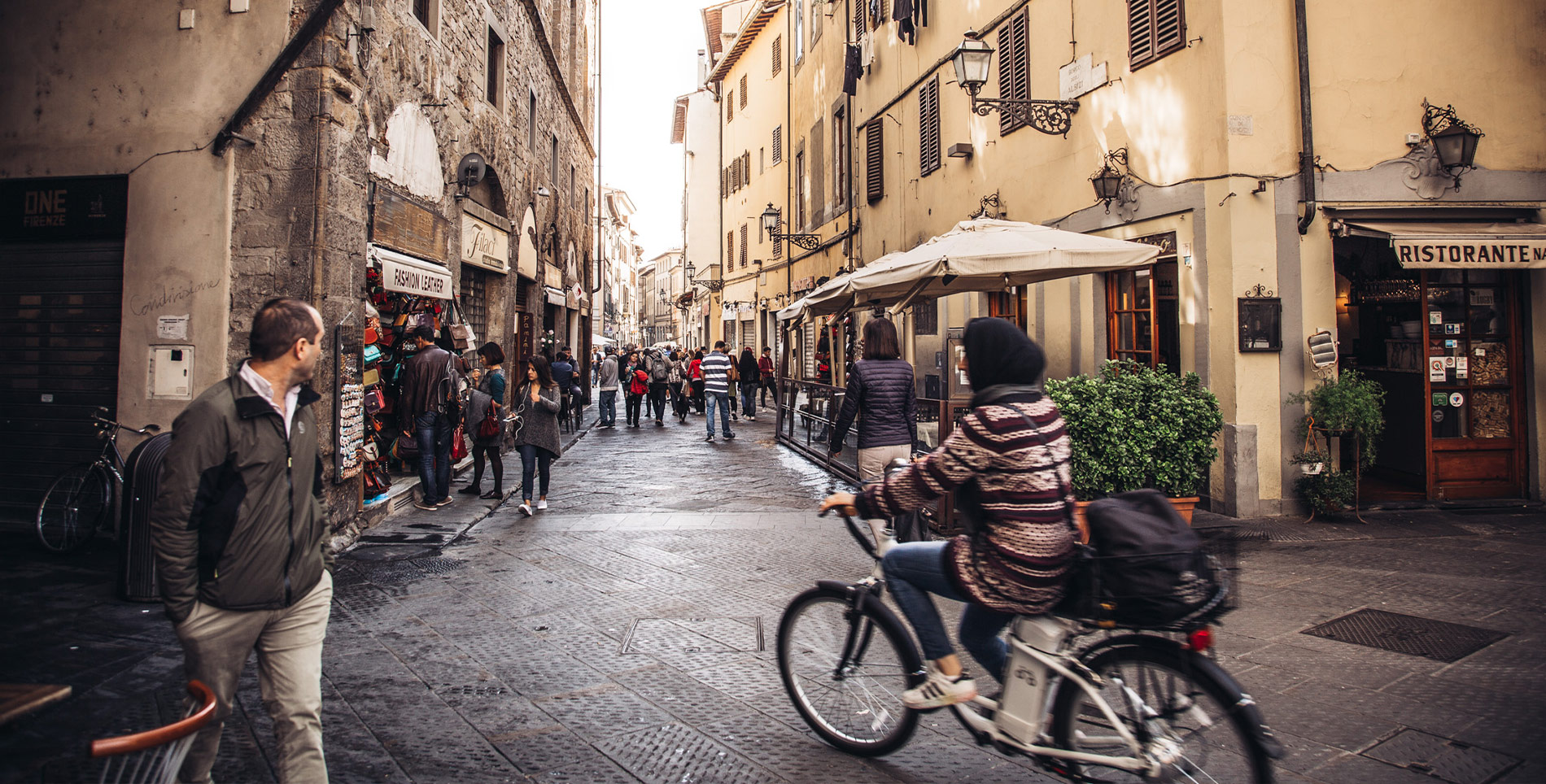
Common Words and Phrases
You should have a little Italian under your belt before visiting Florence. Here are a few of the phrases we found ourselves using most often:
Ciao – Both hello and goodbye, you will say ciao countless times in a day. Although it is one of the most common words, keep in mind that it is quite informal.
Arrivederci – More formal than ciao, arrivederci is another way to say goodbye.
Buongiorno – Broken down, buon mean good, while giorno means day. You can use it in the morning as “good morning,” or throughout the day as “good day.”
Buonasera – A partner to buongiorno, buonasera means goodnight, or good evening.
Per favore – Translating to please, this should be one of your most used words while in Florence.
Tutto bene – Everything is good, all good, etcetera.
Grazie – Thank you!
Prego – You’re welcome.
Scusi – Someone in your way? Hit them with a scusi! While you’re walking around taking in the sights, you’ll have plenty of opportunities to use the Italian equivalent of “excuse me.”
Cin cin – Cheers (informally)!
Salute – Cheers (formally)!
Un caffè – Ask for this if you want a single espresso. If you’re looking for a double, ask for a doppio.
Un cappuccino – A cappuccino. Do not order after noon if you want to avoid weird looks.
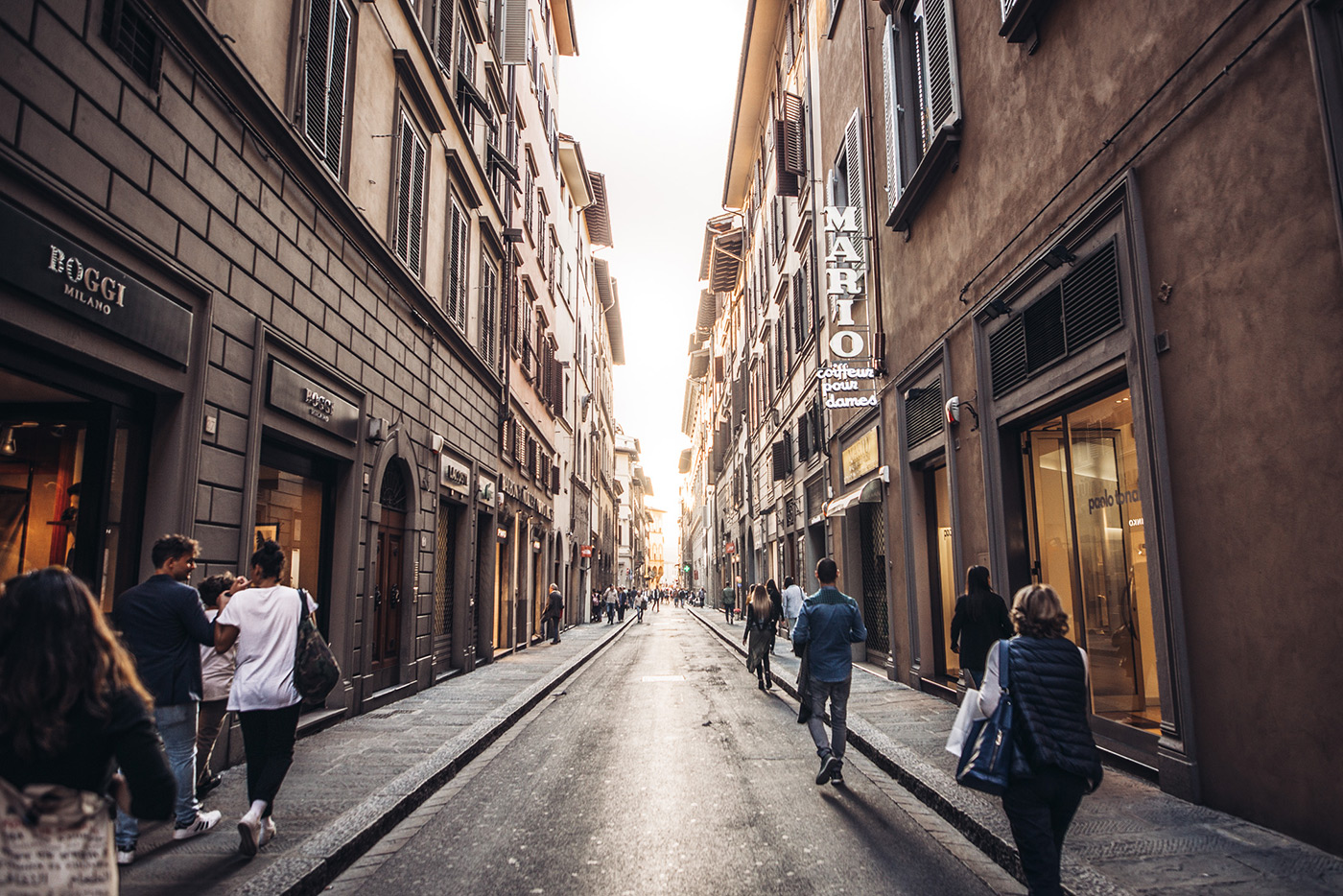
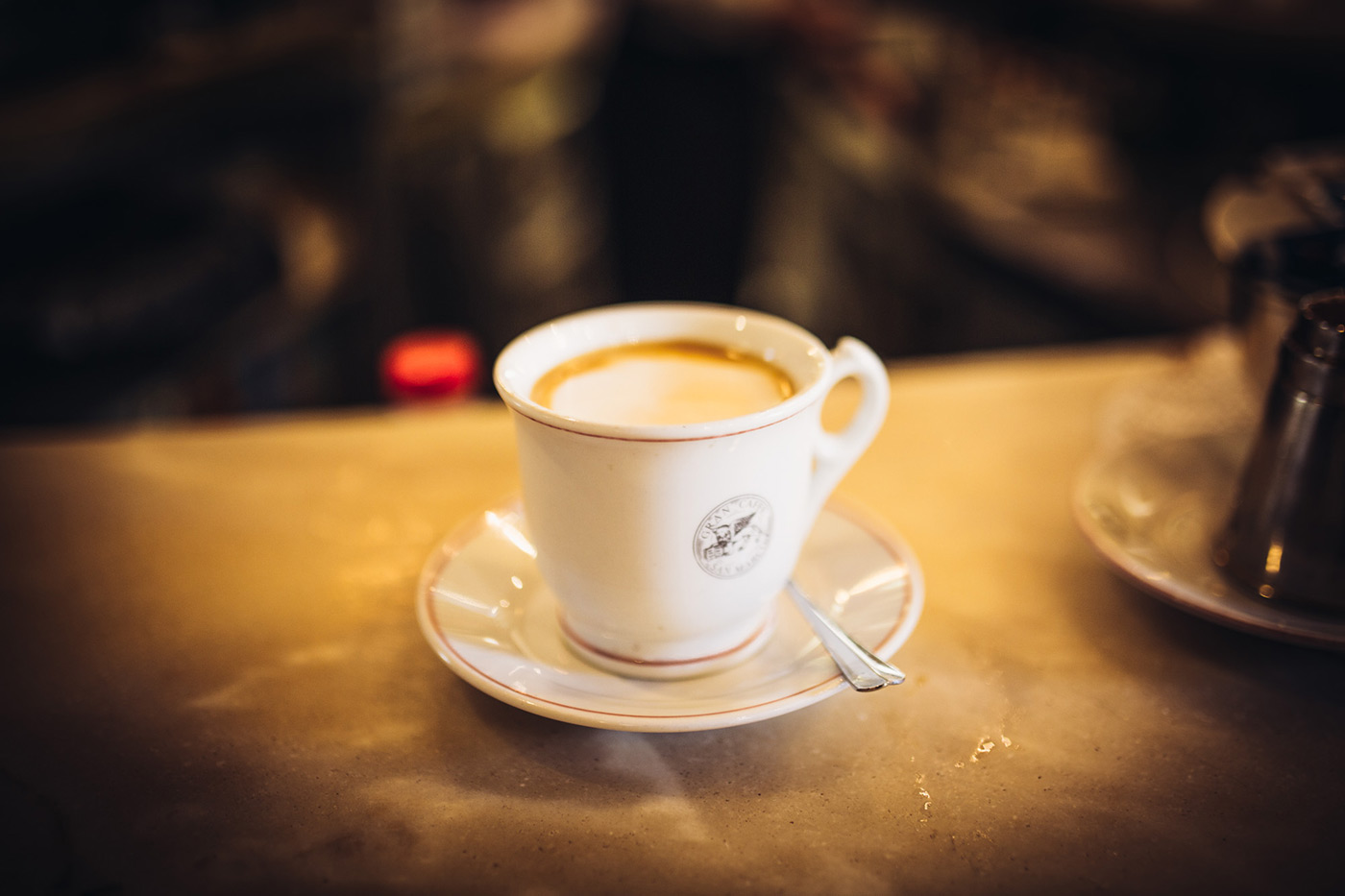
Neighborhoods and Piazzas
One of the easiest ways to navigate Florence is to understand its neighborhoods. Often, if you’re looking for directions, you’ll be given them by the neighborhood or piazza. Here are a few of the neighborhoods and piazzas you can use to get your bearings:
Santa Maria Novella
Named after Basilica Santa Maria Novella, this neighborhood is home to Florence’s major train station and Piazza Santa Maria Novella. Within walking distance of sights like the Duomo, Santa Maria Novella is known for its high-end shops and one of the oldest parfumeries, Officina Profumo-Farmaceutica di Santa Maria Novella.
Oltrarno
Translating to “beyond the Arno,” Oltrarno is about a fifteen minute walk from the city center. Home to Palazzo Pitti and Brunelleschi’s Basilica di Santo Spirito, this is the artisan neighborhood of Florence. While in the neighborhood, make sure to stop by Piazza Santo Spirito for an aperitivo, as well as Mercato di Sant’Ambrogio for produce.
Centro Storico
The historical center of Florence, Centro Storico is where you’ll find the Duomo, the Uffizi Gallery and more. Also, if you’re thinking about climbing the stairs of the Duomo, wear good shoes and be prepared for an hour of the world’s oldest stairmaster.
San Lorenzo
Next to Centro Storico and Santa Maria Novella is San Lorenzo. You’re coming here for Mercato Centrale, one of Florence’s best markets. Downstairs, you’ll find produce, olive oil, meats and more, while upstairs has a food court serving dishes from around the globe, from American-style barbecue to dumplings. Outside the market, you’ll find rows of vendors selling everything from leather to lampredotto sandwiches.
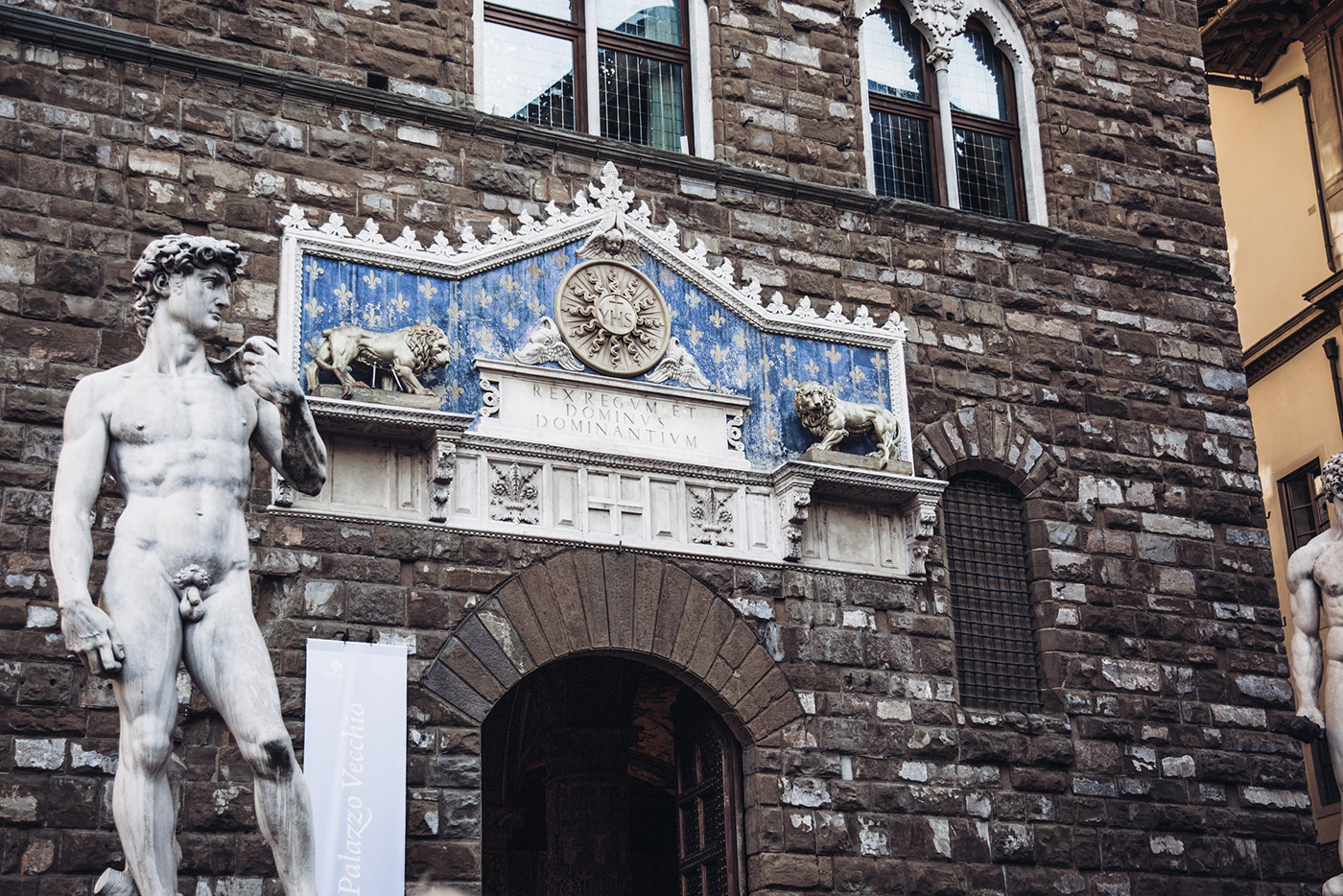
Museums
Florence is practically an open-air museum. At every turn there’s an architectural masterpiece or famed sculpture. But it’s also a city of museums, and chances are you won’t have time to go to all of them. Here are a few of our favorites that are worth a stop:
Galleria dell’Accademia
You’re probably coming here for Michelangelo’s David, and you’d be right to do so. But it would be a mistake to come here just for David. Michelangelo’s Slaves should also be on your list to see, as well as Giambologna’s plaster cast of the Rape of the Sabines. The museum isn’t very large, so take your time and make sure to look around both floors.
Uffizi Gallery
If you only have time to visit one museum in Florence, the Uffizi Gallery should be it. You can spend an entire day here and still want more time. The art ranges from middle ages to modern, including pieces from greats including Boticelli’s Primavera and Caravaggio’s Medusa.
Palazzo Vecchio
Originally constructed in the late 13th century, this used to be the seat of power for Florence’s governing body. Through the years it became the home of the Medici family before eventually becoming the museum it is today. Explore the Salone dei Cinquecento (Hall of the Five Hundred) with frescoes by Giorgio Vasari, the private rooms of the Medici family, and more.
Ospedale degli Innocenti
Ospedale degli Innocenti, or Hospital of the Innocents, started its life as a place where orphaned children could find care. The building was designed by Brunelleschi and now houses work from artists like Sandro Botticelli and Domenico Ghirlandaio.
Palazzo Pitti
On the other side of the Arno from the Uffizi and Duomo sits Palazzo Pitti. Originally built for Luca Pitti in the 15th century, it was later acquired by the Medici family. Inside the Palazzo are galleries and the Royal Apartments, and just outside the back doors, the Boboli Gardens stretch for over 100 acres.
Accademia del Caffè Espresso
La Marzocco’s cultural hub and museum, Accademia, is a must-see for anyone enjoys a cup of coffee. The museum traces La Marzocco’s history, before expanding its scope to coffee as a whole on a global scale, honing in on the cultural and sustainability aspects of espresso.






Our comments section is for members only.
Join today to gain exclusive access.